As plants aren’t, by their nature, very mobile they have developed a variety of ways of protecting themselves from all things herbivorous. Many have evolved spikes, stings and even just an unpleasant taste. However, many went down the route of the ultimate deterrent – being so poisonous that anything eating them was unlikely to ever do so again.
Many of these deadly poisonous plants are the stuff of folklore and have alarming names such as Devil’s helmet,deadly nightshade, the little apple of death and the suicide tree. Whilst these would be enough to put any sane person off eating them I suppose it only helps if you know the name!
Jimsonweed is often listed on other websites as being deadly, along with other Datura plants. I have to say I’ve tried this one personally and lived to tell the tale. So whilst it seems this plant can be deadly, it’s not getting onto my list.
10. Oleander (Nerium oleander)

Originally native to Asia, the Jericho rose or oleander is now common throughout Mediterranean regions and is a popular decorative plant in North America. The Italian name for oleander translates as ‘ass killer’, which should be enough to put anyone off eating them! If you did eat a sufficient does then you would start feeling those ‘ass killing’ effects almost straight away with a combination of cardiac and gastrointestinal symptoms. Bloody diarrhea, vomiting, drooling and irregular heartbeat may all occur and swift treatment is essential. Toxins such as cardiac glycosides, nerioside and oldendrin all contribute to oleander’s lethal armory.
The whole oleander plant is poisonous right down to the nectar. It is said that even the smoke from burning the plant is toxic and there are reports of serious poisoning resulting from using the twigs as cooking skewers. What constitutes a lethal dose seems uncertain with some stating as little as one leaf. Another source states 100 grams (3.5oz) is enough to kill a fully grown horse.
9. White snakeroot (Ageratina altissima)

It is believed that white snakeroot (Ageratina altissima) was responsible for the death of American president, Abraham Lincoln’s mother. She died of what was termed milk sickness which occurred as the result of drinking milk that was tainted with toxins from plants eaten by cows. In the early 19th century thousands of European settlers died in Midwestern America. It was only when a real life Dr Quinn (Anna Bixby) learnt about the properties of snakeroot from an elderly Native American woman that the cause was discovered.
The cause of the toxicity is a type of alcohol, tremetol, which gets its name from the tremors it causes in those poisoned. Along with this there would be violent vomiting, delirium, severe thirst and ultimately death.
The name snakeroot comes from the fact it can be used as a treatment when applied to snakebites.
8. Manchineel (Hippomane mancinella)
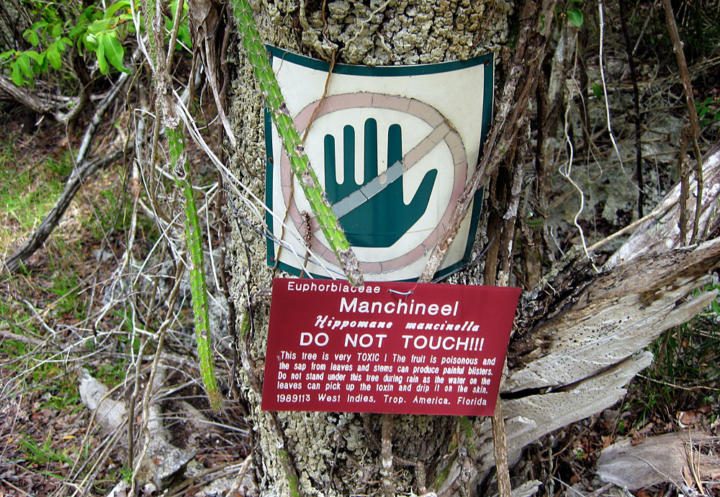
Bearing fruits known as ‘little apples of death’ this is a plant to steer well clear of. Found in coastal regions of Florida, South and Central America the manchineel is possibly the world’s most poisonous tree.
Whilst the fruit is said to be potentially lethal if eaten it is the tree itself that poses the greatest threat. Every part is stuffed full of powerful toxins, most notably the sap which contains phorbol, a strong skin irritant. Contact with the sap provokes strong allergic dermatitis resulting in blistering of the skin. This is a particular hazard during rain when anyone taking shelter under the tree’s leaves runs the risk of getting splashed with sap-laden raindrops. Even a tiny amount can cause the skin to blister, not surprising as this stuff can strip paint of parked cars too!
It is also reported that the smoke from burning the wood can cause blindness.
Of course all this potential for pain didn’t go unnoticed. The Carib natives were said to use the sap on their arrowheads, poison the wells of their enemies with the leaves and even tie some unfortunate victims to the trunk of the tree.
7. Suicide Tree (Cerbera odollam)

With a name like that it is little surprise that this tree is probably responsible for most deaths than any other plant. In the Indian state of Kerala alone it is thought to be responsible for around 50 deaths a year. Despite being called the suicide tree the toxins work equally well for murder and the flavour is easily hidden in a bowl of spicy food.
It is in Madagascar where Cerbera claimed most victims. Referred to as ‘ordeal poison’ it was used in the process of ‘trial by ordeal’. Basically, if you survived you were innocent, if you died you were, well, dead… It is estimated that around 3,000 people a year died in these trials, many willingly submitting themselves to the process believing it infallible. Trial by poison was finally abolished in 1861 by King Radama II.
It is the seed inside the fruit of this plant that is highly poisonous. It contains the powerful alkaloid, cerberin, which is similar to digoxin in foxgloves. These both work by disrupting the heart’s rhythm often with fatal results.
Cerbera odollam is a member of the same family as the previously mentioned oleander.
6. Deadly nightshade (Atropa belladonna)

Like its family members, the potato and the tomato, deadly nightshade contain the glycoalkaloid poison solanine. However, whereas you might have to eat a truck load of tomatoes to poison yourself, a single leaf of belladonna might do the trick for you.
The main toxins in deadly nightshade are atropine, scopolamine and hyoscyamine all of which affect the nervous system by blocking certain neurotransmitters. Whilst all parts of the plant are toxic, the root is generally most poisonous. A dose of around two to five berries is usually sufficient to kill an adult.
The classic symptoms of poisoning include dilated pupils, blurred vision, dry mouth, hallucinations, loud heart beats (audible several feet away), aggressive behaviour, convulsions, coma and possibly death. The effects of the poison are by no means instant and may take from several hours to days to kick in.
The name Atropa comes from atropine which in turn is from the Greek goddess who cut the threads of life. Belladonna means ‘beautiful lady’ and refers to the 17th century practice of women putting a small extract of deadly nightshade in their eyes to dilate their pupils and make them more attractive.
5. Lily of the Valley (Convallaria majalis)
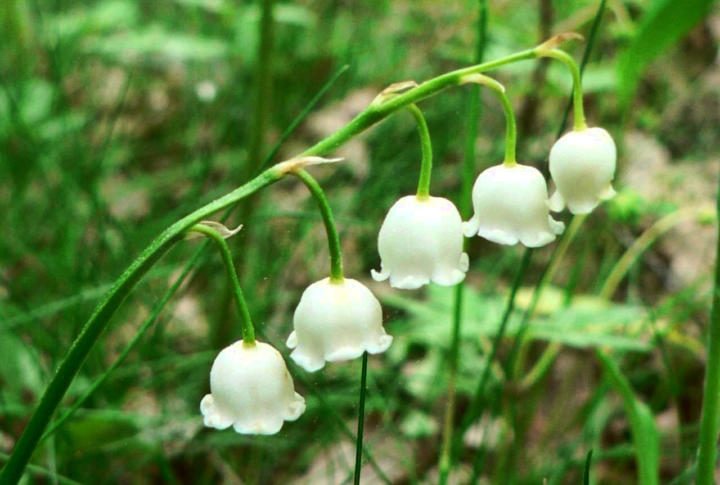
Lily of the valley can be found throughout Northern Europe and America where it is common in woodland. Despite its pretty appearance this plant is deadly poisonous containing no less than 38 different cardiac glycosides. Chief amongst these is convallatoxin which has a similar effect to digitalis in foxgloves. All parts of the plants are toxic including the orangey-red berries.
The symptoms of lily of the valley poisoning include severe headache, nausea, vomiting, slow heartbeat and excessive urination.
4. Hemlock
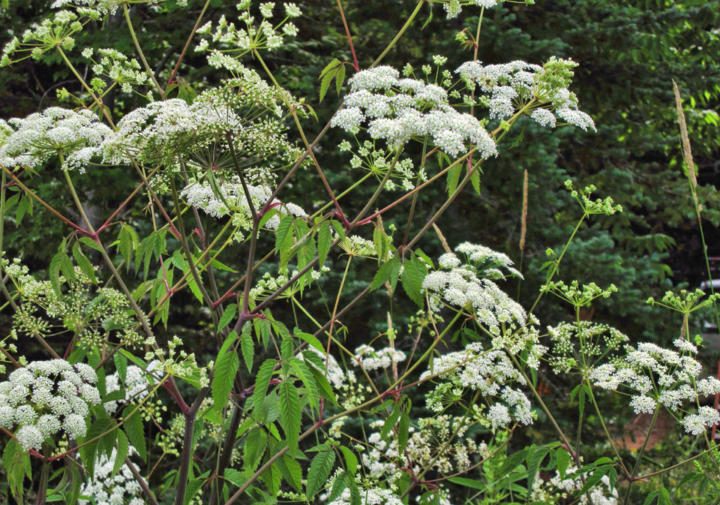
Hemlock is the poison of the classics. In ancient Greece it was used as a form of execution, most notably on the philosopher Socrates in around 400 BC.
There are a few highly poisonous varieties of hemlock; best known in Europe is Conium maculatum, or poison hemlock. In North America water hemlock (Cicuta maculata) is the most infamous. Both can prove deadly if eaten.
Poison hemlock contains the potent toxin coniine. It is estimated that a dose of around 0.15 grams is sufficient to kill an adult. The mode of action of this poison is ‘killing from the outside in’. A numbness of the extremities slowly spreads inwards, culminating in paralysis of the lungs and death. Cases of hemlock poisoning still occur, usually with people mistaking the plant for something edible such as a salad ingredient. Hemlock is a member of the same family as the carrot and fennel so the highly toxic root may also be consumed in error.
Water hemlock is related but the toxins here, cicutoxin and cicunol, have a very different effect. These are neurotoxins and cause violent, painful convulsions, cramps and tremors very different to the calm sweeping paralysis of coniine. Even those who survive taking water hemlock may be afflicted with long-term damage such as amnesia.
Water hemlock is widely regarded as the most poisonous plant in North America.
3. Castor Bean (Ricinus communis)
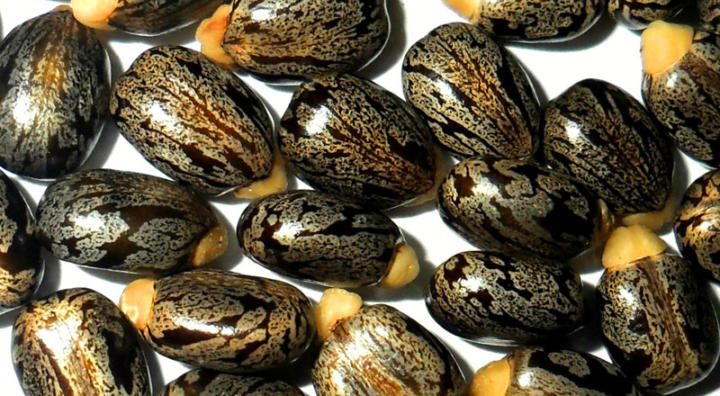 The castor bean plant is generally known for producing castor oil. This vegetable oil is widely used in food production and is also available medicinally as it is high in vitamins A & D and is an effective laxative. It comes from seeds of the plant which are around 50% oil. Bizarrely, the seeds are also a source of one of the most powerful plant toxin on Earth, ricin. It is a more potent poison than cyanide, strychnine or the strongest snake venom. Fortunately, this is only if the toxin is inhaled or injected; if eaten ricin is still very dangerous but around a thousand times less deadly. That said it would only take a few of the beans to kill an adult.
The castor bean plant is generally known for producing castor oil. This vegetable oil is widely used in food production and is also available medicinally as it is high in vitamins A & D and is an effective laxative. It comes from seeds of the plant which are around 50% oil. Bizarrely, the seeds are also a source of one of the most powerful plant toxin on Earth, ricin. It is a more potent poison than cyanide, strychnine or the strongest snake venom. Fortunately, this is only if the toxin is inhaled or injected; if eaten ricin is still very dangerous but around a thousand times less deadly. That said it would only take a few of the beans to kill an adult.
These shrubby plants are fairly common throughout the warmer parts of the world and will grow virtually anywhere. It’s actually quite a pretty plant with a blossom of large orange flowers. The symptoms of consuming the beans are not so pretty though; you can expect abdominal cramps, vomiting, internal bleeding and kidney failure. The effects are not immediate and it may take over a day for symptoms to occur. In fatal cases it may take as long as 5 days for the victim to die this unpleasant death. It is for this reason that despite being relatively common and accessible, taking Ricinus is unheard of as a form of suicide.
Ricin has however been used to kill others. It was developed as a biological weapon as early as World War I and both Cold War superpowers weaponized it. In more recent times it was used by Soviet secret agents to murder Bulgarian dissident Georgi Markov using a poisoned umbrella tip.
2. Aconite (Aconitum napellus)
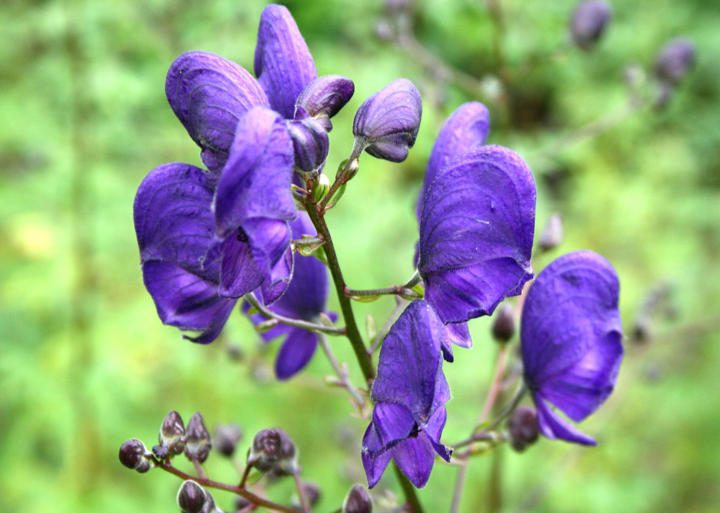
Photo: Jean-Pol GRANDMONT / License
Aconite goes by many names some which refer to the shape of the flower e.g. monkshood or devil’s helmet and others which refer to traditional uses, such as wolf’s bane. This name comes from its use by ancient Greek shepherds who would tip there arrows in aconite to kill wolves. Any plant with so many names should set alarm bells ringing as it must be fairly notorious and this is definitely the case for aconite. Also known as “the queen of poisons” this is possibly the most poisonous plant in Europe.
The pretty purple flowers are a fairly common sight on the foothills of mountains throughout northern Europe and Asia. They grow to around 6 feet (2m) tall with all parts of the plant containing deadly aconitine. Just touching the plant can cause severe symptoms whilst ingesting often proved fatal. The effects are immediate and begin with a burning in the mouth. This is followed by drooling, vomiting and diarrhea. As the poison progresses victims may experience numbness, tingling, irregular heartbeat and ultimately death from respiratory failure.
Wolfsbane’s deadly history is long. It was named ‘ἀκόνιτον’ by the ancient Greeks, meaning ‘without a struggle’ hinting at the poison’s mode of action. It features in literature both ancient and modern from Shakespeare right up to Harry Potter in which it is brewed by Professor Snape to turn Remus Lupin into a werewolf.
The sap has long been used to tip spears and arrows. It was even used by some Eskimos to tip their harpoons for hunting whales. A more recent use was by the Nazis in World War II when the toxin was extracted to tip bullets.
1. Rosary Pea (Abrus precatorius)

Abrus precatorius is another plant with many names; rosary pea, jequirity, paternoster pea, crab’s eye, precatory bean, Indian licorice or Jumbie bread. None of these names though hint at the fact the beans contain a poison nearly 100 times more deadly than ricin.
The toxin is called abrin and there is little doubt that this is the most deadly plant poison known to man. Its effects are very similar to those of ricin. Surprisingly this is a common plant throughout the tropics and is regarded as an invasive pest species in many places, most notably Florida.
The bright red and black beans have a variety of uses including as the rattling beans inside maracas and in jewelry – this is where the name rosary pea comes from as they are commonly strung together to form rosary beads. Fortunately for the wearer the bean has a very tough protective coating, unfortunately for jewelry makers pricking a finger whilst working on one can and has caused numerous fatalities. In a recent incident a number of bracelets were recalled at one of the UK’s best known tourist attractions, the Eden Project, when it emerged they were made of Abrus precatorius seeds.
Whilst the theoretical danger from a plant containing one of the most powerful toxins known to man is obvious this does not seem to have been borne out statistically. It is known that the seeds are relatively safe if swallowed whole as they will pass through the body protected by their tough coating. What is more surprising is the number of survivors who have chewed or ground up the seeds. Whilst some have died as many have survived even though suffering severe gastrointestinal upsets. It is thought the reason for this is that the toxin abrin is only slowly absorbed into the body. So, given swift medical care, or just the body’s natural purgative actions it seems many can survive.
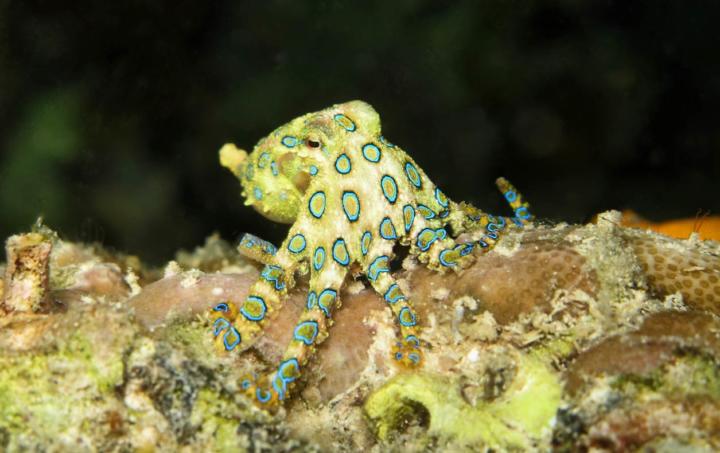
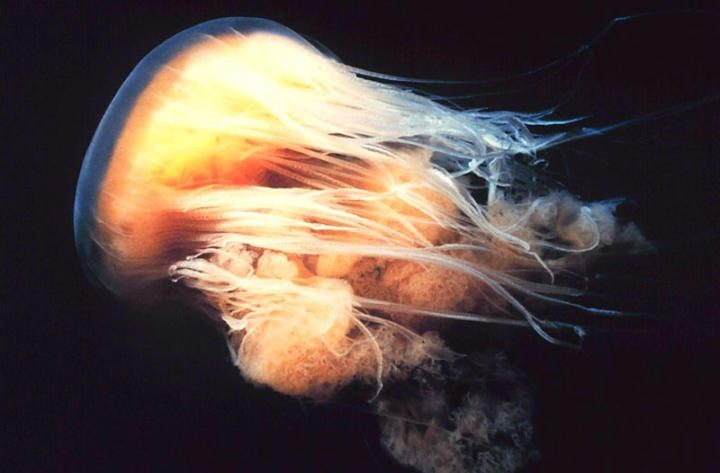
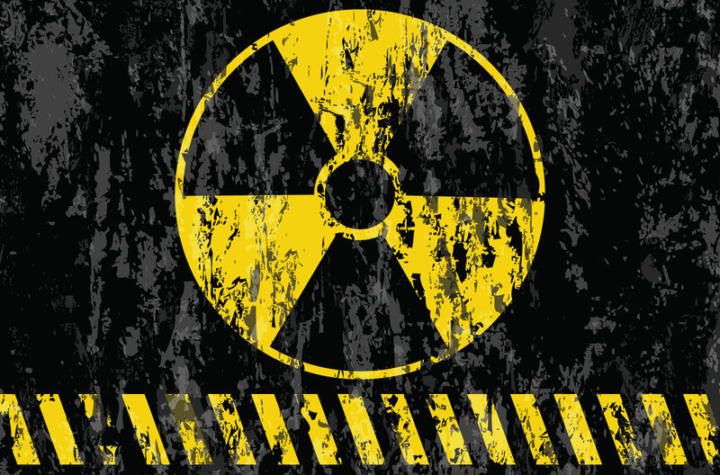
Hi man,
Great ! it’s a good stuff to share with a serial killer
I’ve enjoyed all of the different articles. Thank you so much. We had oleander around when I was a kid, and also a castor bean plant at one house. we we always warned how dangerous they were.
I have oleander in my backyard and ive touched the sap many times, but no effects have yet to come
Why no one is teaching these things to kids in school. just blows my mind…
Your right. Why is no one teaching these stuff in the school? Just imagine yourself, your kid walking and then saw an Aconite. They look beautiful and seriously ur kid will touch it. I mean just WAH??????????????????????????????????????????????????????????????????????????????????????????????????????????????????????????????????????????????
Most poisonous thing in world
-the Human tongue
Hemlock Water Dropwort should be in this list. It is even more dangerous than Common hemlock ( conium maculatum), mainly because the roots and stems taste sweet, a bit like carrot or parsnip, to which family it belongs.
Death can ensue after only a few hours and it is one of the worst deaths imaginable. The poison acts on the central nervous system, paralysing the breathing apparatus while leaving the mind totally clear. It was either this or common hemlock that was fed to the philosopher Socrates.
speaking of ‘calm’ poisons like Poison Hemlock (Conium maculatum),
you forgot the Opium Poppy (Papaver somniferum),
whose agents makes you sleep and stops your heart and lungs.
the only difference to other deadly plants:
opium is more expensive, thanks to prohibition of ‘narcotics’.
one dose of 500 milligram brown heroin would cost around 50 us-dollars,
which must be cooked with citric acid, and injected into blood to be deadly.
morphine and heroin [di-acetyl-morphine] are more potent than raw opium,
also thanks to prohibition, and the need to smuggle. [and big pharma …]
Back in elementary we have three of those poisonous plants in our schoolyard, like hemlock, snakeroot and suicide tree, I don’t know why do they plant them or those plants are growing wild and they didn’t cut them off for the sake of the childrens. But luckily no one ever getting poisoned even though one of my friend ever almost tried the suicide tree fruit and one of the teacher scream at us to stop before he bite it down, saying it’s poisonous, and after that we learned about poisonous plants like Wolf’s bane and the symptoms, but until I graduated they haven’t get rid of those plants..
Actually, Professor Snape brewed the Wolfsbane potion to keep Remus Lupin from turning into a werewolf and instead, a harmless wolf while on school property. Incidentally, Remus Lupin can be translated into Werewolf McWerewolf. O, the irony.
Any poison this powerful is useful in warfare. Man has known this in his six million years on Earth.